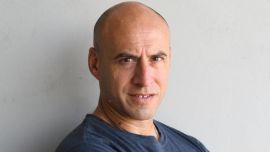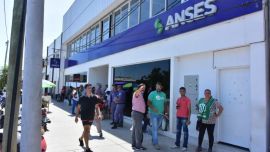Poverty rose to affect 39.2 percent of Argentina’s population in the second half of last year, according to new data from the INDEC national statistics bureau.
The figure is a rise of close to three points on the first half of 2022, when 36.5 percent were considered poor. It also underlines the challenges facing Argentina, where citizens are suffering from runaway inflation and a sharp fall in purchasing power as price hikes outpace wage rises.
Extreme poverty, however, fell in the latter half of 2022 to reach 8.1 percent of the population, the agency’s report also revealed – a drop of 0.7 percentage points in the first half.
According to INDEC’s survey, more than 11.5 million people and 9.9 million households were living in poverty in the second half of 2022.
The figures, based on Argentina’s 31 largest urban areas and not the entire country, only cover part of the population, so if projected out to the whole country the number of poor people would be around 17.6 million. The poverty line is established in relation to household income with respect to a basic basket of goods and services. Destitution, or extreme poverty, is determined on the basis of a food basket.
Argentina’s poverty rate had dropped from 42 percent in the second half of 2022 to 37.3 percent last year, but the level has now surged back to near 40 percent. It is presumed that when official data is next published, the figure will continue to rise.
At the regional level, poverty increased across all regions from the previous half-year period. Extreme poverty fell in two regions, including Greater Buenos Aires, and increased in the other four.
The highest incidences of poverty were observed in the northeast (43.6 percent), and northwest (43.1 percent). The lowest incidences were recorded in the Patagonia (34.7 percent) and Pampa (36.3 percent) regions.
In terms of age groups, it is worth noting that slightly more than half of children (54.2 percent) in Argentina aged 0 to 14 years were considered poor at the turn of last year.
The total percentage of poor people for the 15 to 29 and 30 to 64 age groups was 45 percent and 35 percent, respectively. In the population aged 65 and over, 14.5 percent were living below the poverty line.
Argentina closed out last year with an inflation rate of 94.8 percent – one of the highest rates in the world – and prices rose 6.6 percent in the last month alone.
According to INDEC’s measurement establishing the poverty threshold, a typical family of four members (two adults and two children) needed 177,063 pesos last month to not be considered poor.
The basic food basket for a family of four was established at about 80,000 pesos, the same amount that the minimum wage will reach in April.
Private forecasts
Private studies estimated that the poverty figure would be close to 40 percent, with the Universidad Torcuato Di Tella University forecasting 40.2 percent and the Centro de Estudios Distributivos, Laborales y Sociales (Centre for Distributive, Labour and Social Studies, Cedlas) 39.7 per cent, though both warned the true figure could be higher.
Speaking prior to the publication of the latest figure, Agustín Salvia, the director of the influential Observatorio de la Deuda Social of the Universidad Católica Argentina (Social Debt Observatory of the Catholic University of Argentina), had predicted a rate of 39 percent.
“The poverty rate will be close to 39 percent, it will not exceed 40 percent, according to our forecasts,” said Salvia, who is considered to be a leading expert on poverty.
“That 39 percent implies poverty levels three points higher than in the first half of last year, two points higher than in the second half of 2021, three points lower than in 2020 [in the context of the Covid-19 pandemic] and four points higher than when Alberto Fernández took office,” he continued.
“Alarming data shows that there is a situation of structural poverty that, with fluctuations, affects between 35 and 40 percent of the population, made up of a strong component of the lower middle class that have fallen into poverty, are very affected by inflation, and do not have social [welfare] plans” from the government, he added.
– TIMES/PERFIL/NA






















Comments